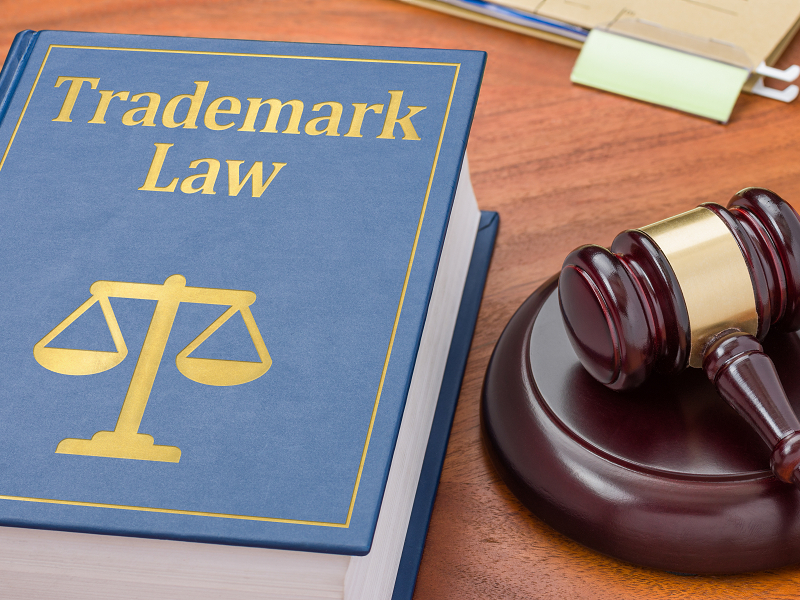2023.10.04 Trademark
Long-Awaited Trademark Law Amendment Implemented!

Act for Partial Revision of the Unfair Competition Prevention Act, etc., including the Trademark Law, was promulgated on June 14, 2023.
With the exception of some provisions, the amended Trademark Law is scheduled to take effect within one year after promulgation, likely on April 1, 2024.
Therefore, we would like to introduce the amendments to the Trademark Law.
1. Introduction of Consent System
(1) Background
As indicated in the following provision, if an applied trademark (hereinafter also referred to as a “subsequent application trademark”) is identical or similar to a prior registered trademark, the applied trademark cannot be registered.
(Trademark Law)Article 4 (1)Notwithstanding the preceding Article, no trademark may be registered if the trademark:(xi)is identical with, or similar to, another person’s registered trademark which has been filed prior to the filing date of an application for registration of that trademark, if such a trademark is used in connection with the designated goods or designated services relating to that registered trademark (referring to goods or services designated in accordance with Article 6, paragraph (1) (including cases where it is applied mutatis mutandis pursuant to Article 68, paragraph (1)); the same applies hereinafter), or goods or services similar thereto;
Therefore, the applicant of the subsequent application trademark has to employ a method known as “assign-back.”
This involves the applicant in temporarily acquiring the trademark rights of the prior registered trademark or temporarily transferring the subsequent application trademark to the holder of the prior registered trademark, ensuring that the applied trademark does not fall under the category of “another person’s registered trademark” as defined in Article 4(1)(xi) of the Trademark Law. Subsequently, after the applied trademark is registered, the trademark rights of the prior registered trademark have to be returned to the holder of the prior registered trademark, or if the applicant has temporarily transferred the subsequent application trademark to the holder of the prior registered trademark, the applicant has to reacquire it.
However, one of the purposes of the above provision is to protect the rights of the holder of the prior registered trademark. In view of this purpose, it is considered that there is no problem if the holder of the prior registered trademark consents to the registration of the subsequent application trademark, and in fact, in countries such as the United States and in Europe, a similar system known as the “consent system” allows the registration of subsequent application trademarks if such “consent” is obtained. Therefore, it has been pointed out that Japan’s lack of a consent system has hindered the formation of consent agreements on a global scale, and that the assign-back procedure mentioned above has been burdensome. Thus, it has been discussed in Japan that trademark registration should be granted subject to the consent of the holder of the prior registered trademark.
Therefore, while maintaining the above-mentioned provision, new provisions will be added to introduce the consent system in Japan.
(2) Details of Amendment
The following provision will be added in the amended Trademark Law:
(Amended Trademark Law)Article 4 (4)Paragraph (1), item (xi) does not apply to a trademark falling under this item if the applicant for trademark registration has obtained the consent of the other person regarding the acceptance of trademark registration and there is no risk of confusion between the goods or services for which the applied trademark is used and the goods or services of the other person who is the owner of the registered trademark or the exclusive right to use the registered trademark or the non-exclusive right to use the registered trademark.
With this additional provision, after the amended law comes into effect, even if the subsequent application trademark is identical or similar to the prior registered trademark, trademark registration for the subsequent application trademark could be obtained as long as it meets two conditions: (1) obtainment of consent from the holder of the prior registered trademark, and (2) no risk of source confusion with the goods or services of the holder of the prior registered trademark, exclusive right to use or non-exclusive right to use the prior registered trademark.
Please note that specific procedures required for demonstrating these conditions, such as proof of (1) obtainment of consent and proof of (2) no risk of source confusion, are not clear at present. Therefore, it is necessary to continue monitoring related information to be announced by the Japan Patent Office (JPO).
(3) Other Matters
With the introduction of the consent system, the Trademark Law will be also added with the following provisions:
(i) Request for Distinctive Indications for Prevention of Confusion (Article 24-4 (1) of the Amended Trademark Law)
When a subsequent application trademark has been registered pursuant to the consent system, if business interests of either one of the holder of such a registered trademark and the holder of the prior registered trademark are likely to be damaged by the other holder’s use of its trademark right, it is possible to request the other holder to affix an indication that may sufficiently prevent any confusion between the goods or services pertaining to the businesses of both parties.
(ii) Cancellation Trial Based on Unauthorized Use (Article 52-2 of the Amended Trademark Law)
When a subsequent application trademark has been registered pursuant to the consent system, if either one of the holder of such a registered trademark and the holder of the prior registered trademark uses, for the purpose of unfair competition, its registered trademark for its designated goods or designated services in a manner that may cause confusion with the goods or services pertaining to the business of the other holder, any person may file a request for a trial for cancellation of the trademark registration owned by the holder who is engaged in such unauthorized use.
2. Relaxation of Registration Requirements for Trademark Containing Another Person’s Name
(1) Background
Until now, in principle, if an applied trademark falls under any of the following items listed in Article 4 (1) (viii) of the Trademark Law, trademark registration cannot be obtained:
(Trademark Law)Article 4 (1)Notwithstanding the preceding Article, no trademark may be registered if the trademark:(viii)contains the portrait of another person, or the name, well-known pseudonym, professional name or pen name of another person, or well-known abbreviation thereof (except those the registration of which has been approved by such another person);
Among the items listed in this provision, “the name of another person” has been particularly problematic in practice. Since the provision does not specify the requirement of whether the name (a full name, in most cases) is well-known or not, if the applied trademark contains “the name of another person” in its composition, it falls under this provision and trademark registration cannot be obtained in principle. It is stipulated that, as an exception, the applied trademark could be registered if consent has been obtained from “another person”, in other words, from the others who have the name concerned.
However, obtaining consent from all of the others with the name concerned is not practical, and as a result, this provision has become a barrier, preventing trademark registration in many cases. Especially for those who are conducting business activities using their own names, this provision has hindered the use of their own names as trademarks. Furthermore, harmonization with systems in other countries has been also sought.
Therefore, this provision will be amended this time.
(2) Details of Amendment
The provision of amended Article 4(1) (viii) of the Trademark Law is as follows (see the underlined portions newly added this time):
(Amended Trademark Law)Article 4(1)Notwithstanding the preceding Article, no trademark may be registered if the trademark:(viii)contains the portrait of another person, or the name (limited to the name widely recognized among consumers in the field of the goods or services for which the trademark is used), well-known pseudonym, professional name or pen name of another person, or well-known abbreviation thereof (except those the registration of which has been approved by such another person), or contains another person’s name and does not meet the requirements set forth by Cabinet Order.
With this amendment, even if the applied trademark contains “another person’s name”, trademark registration could be obtained in principle if “another person’s name” has not been widely recognized among consumers.
However, to prevent malicious trademark applications based on the fact that “another person’s name” has not been widely recognized yet among consumers, a supplementary provision about the requirements to be set forth by Cabinet Order will be added to allow applied trademarks to be rejected if there are circumstances that infringe on another person’s personal rights based on their name.
With this supplementary provision, for malicious applications, trademark registration will not be allowed, as has been the case until now. However, since the specific contents of the Cabinet Order has not been published yet, we need to continue monitoring related information to be announced by the Japan Patent Office (JPO).
However, even if the specific contents are published, it may be difficult to prove malicious intent in practice, and so it is strongly recommended to file a trademark application for a personal name as soon as possible if business activities are conducted using a personal name, to prevent malicious third parties from obtaining a trademark registration for the personal name.

